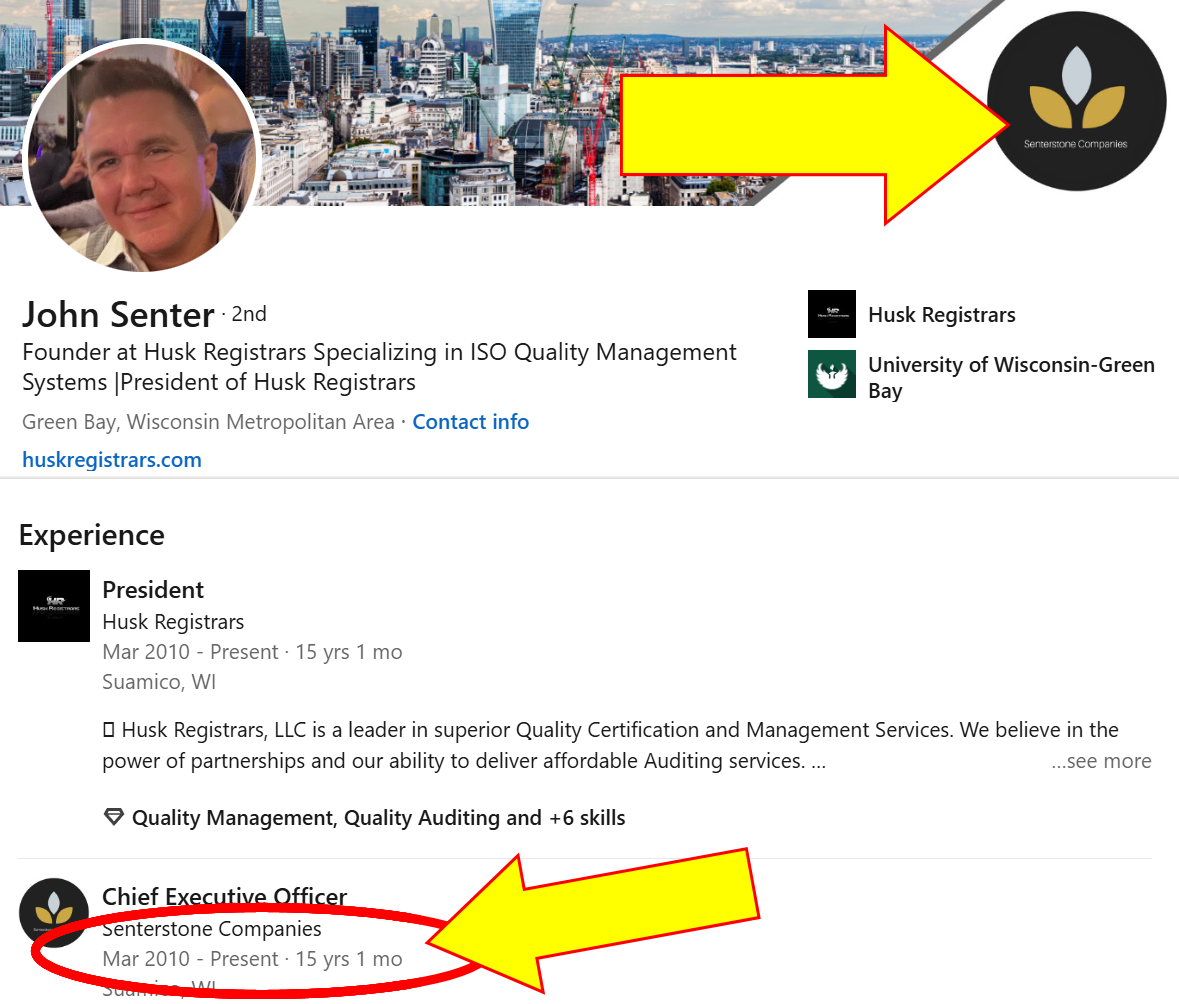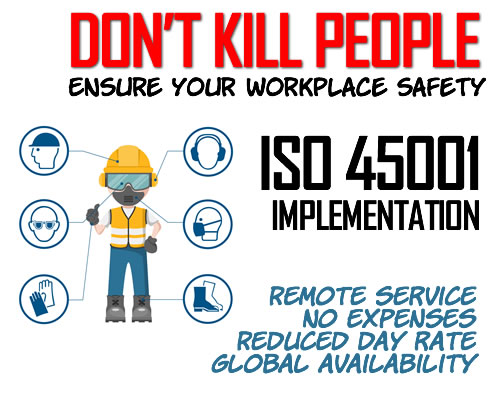You may recall that back in December of 2022, we filed a complaint with Husk Registrars alleging they were certifying the clients of the owner’s consulting company, Senterstone Quality Consultants. In response to an informal question about the arrangement, Husk owner John Senter threatened to sue Oxebridge even before it had been filed.
Well, we just filed the complaint anyway, and Senter dragged his feet, refusing to respond. By 2023, we gave up and escalated the matter to Husk’s accreditation body, IAS. But then the IAS just ignored the complaint for another year, prompting us to escalate the matter to the IAF regional body, IAAC. They are supposed to oversee IAS and ensure they comply with ISO 17011.
IAAC did nothing at all, in keeping with the corrupt practices of the IAF and its regional bodies.
Just to recap, the problem arose when we found social media posts of Senterstone clients thanking Husk Registrars for their “internal audits,” and then records later showing Husk had performed the ISO 9001 audit for those very clients. For example:
The whole thing was a bit of a mess, but I gave Senter a lot of room to explain his way out of it. I had a feeling there was a more honest explanation for this, like perhaps the post by Husk’s client misspoke when they called the audits “internal” when they actually meant external. But Senter was so busy being angry, he never bothered to respond properly. He just kept stamping his foot or ignoring the matter outright.
It was all very weird. Until, suddenly, it all started to make sense.
The Ref Stopped the Clock
Out of the blue, I received an email from IAS this month (March of 2025). It said IAS had concluded its investigation and found no wrongdoing by Senter or Husk. Of course, that is expected — CBs never find fault with the CBs that pay them — but I wanted to see just how IAS would contort itself in this case.
Engaging in said contortion, IAS claimed the entire matter was moot because Senter had given away (sold?) Senterstone Consulting years ago, and he no longer owned it. IAS used some very carefully chosen words to defend this lack of action, saying, “We have found no evidence of violation of the related clauses of the ISO/IEC 17021-1 standard at this time” (emphasis added.)
Those words give us a hint as to what happened. I’m guessing, but it certainly seems that by delaying the processing of the matter for over two years, IAS gave Senter time to unload his consulting company. That would explain why Senter himself was being so evasive. He may have been using that time to “sell” Senterstone, and IAS helped him run out the clock.
Rather than investigate if any of the IAS-marked certificates issued by Husk — such as the one above — had been issued under conflicts of interest, IAS just ignored everything in the past. Now that Senter had split off Senterstone, they cleared Husk because, as of right now (“at this time,” as they said), there were no more problems.
Meaning: CBs can violate rules now, so long as they stop doing it in the future.
IAS then said, “the Senterstone Companies Linkedin Profile shows no activity – according to Mr. Senter, he no longer has access to this page.” IAS couldn’t be bothered to check Senter’s personal LinkedIn profile, which still shows him as CEO of Senterstone, right now. In fact, he still has the Senterstone Companies logo on his profile. Senter may not operate the profile for Senterstone, but he certainly manages the profile for himself. He’s been using it to post comments as recently as last month. Here is the screenshot of his profile taken today (March 20, 2025):
What’s troubling is that IAS wrote, “the Senterstone Group of Companies was never a legally registered entity and was instead an informal name used by Mr. Senter in social media posts,” as if their response was written by him, and not by an objective party. Worse, nobody can prove Senterstone was sold or not, since there was never any “legal” evidence that it existed in the first place. Other than all the posts he made about it, the company’s logo, its websites, etc.
Which opens up another angle for CBs: they can apparently perform consulting so long as they do it through a made-up company that doesn’t actually exist, but markets itself like mad anyway. So long as you never register your LLC or Inc, I guess you can violate ISO 17021?
The question, then, is how did Senterstone clients pay Senter for his work? If the company didn’t exist, did they give him bags of cash? Did they pay Husk Registrars? Where did the money go? A simple answer might be that Senterstone never had clients because the consulting business never took off. That would be a simple explanation, but it would be embarrassing to admit. But we simply don’t know because neither Senter nor IAS provided any details at all in their shutdown of this complaint.
The Right Play
What should have happened? First, IAS should have answered the complaint on time and not spiked the ball in Husk’s favor. Next, they should have probed the old certificates issued to Husk clients and recalled them if they found they had been issued to Senterstone consulting clients. Husk should have been forced to foot the bill to transfer his clients to a new CB.
IAS should have also done more than just take Senter’s word for everything, and actually checked social media and asked for documented evidence that he sold (or gave away) Senterstone.
But if IAS did any of that, Husk would stop paying IAS, so that was never on the table. Accreditation bodies need their CBs to pay them, and if you hold them accountable, they cut off their main revenue stream.
As for the IAAC, well, they should have investigated IAS for blowing off a complaint for years, and they did nothing at all. I really have no idea why the IAF or its regional bodies exist at all, other than to send money to their executives.
For its part, IAS says it “implemented improvement of a third level review that complaints are handled in a timely manner,” which was hardly a thorough response to the problem. The letter sent by IAS was unsigned, too, which never boosts confidence.
So, once again, a CB escaped any real oversight. We may never know if Husk certified its own clients because nobody ever checked. If they did, they got away with it. If they didn’t, they failed to use this opportunity to clear up the record with what was probably an entirely innocent explanation.
Christopher Paris is the founder and VP Operations of Oxebridge. He has over 35 years’ experience implementing ISO 9001 and AS9100 systems, and helps establish certification and accreditation bodies with the ISO 17000 series. He is a vocal advocate for the development and use of standards from the point of view of actual users. He is the writer and artist of THE AUDITOR comic strip, and is currently writing the DR. CUBA pulp novel series. Visit www.drcuba.world









